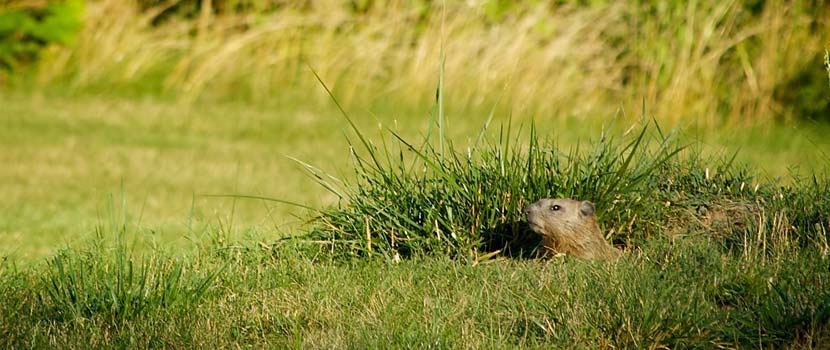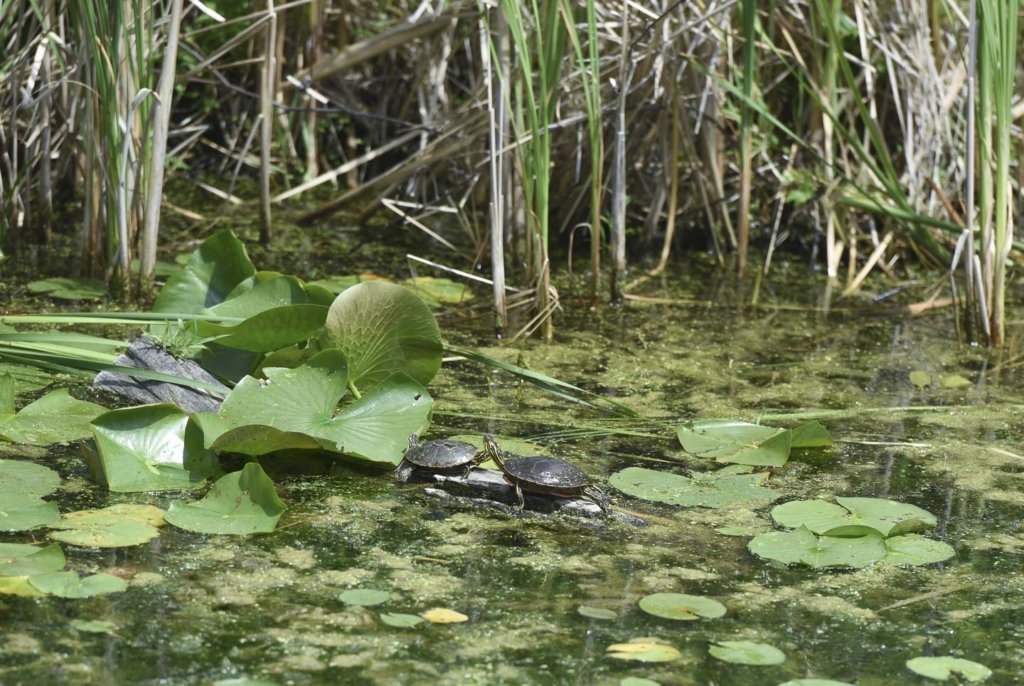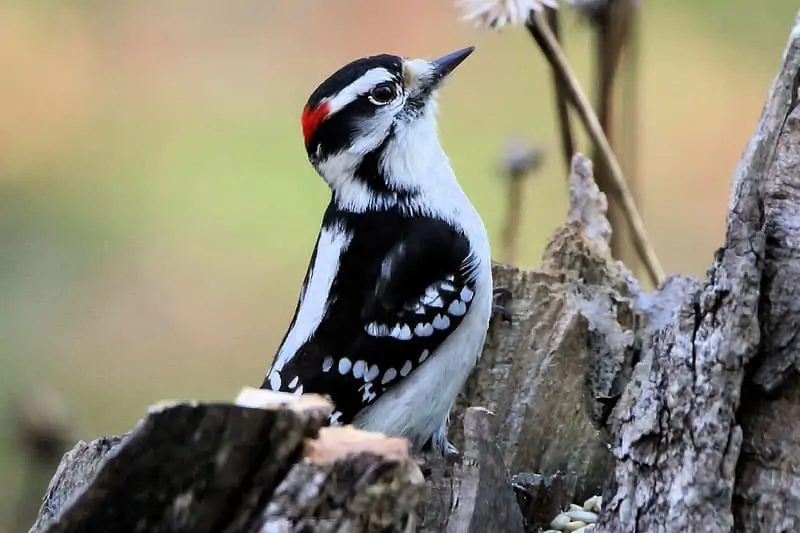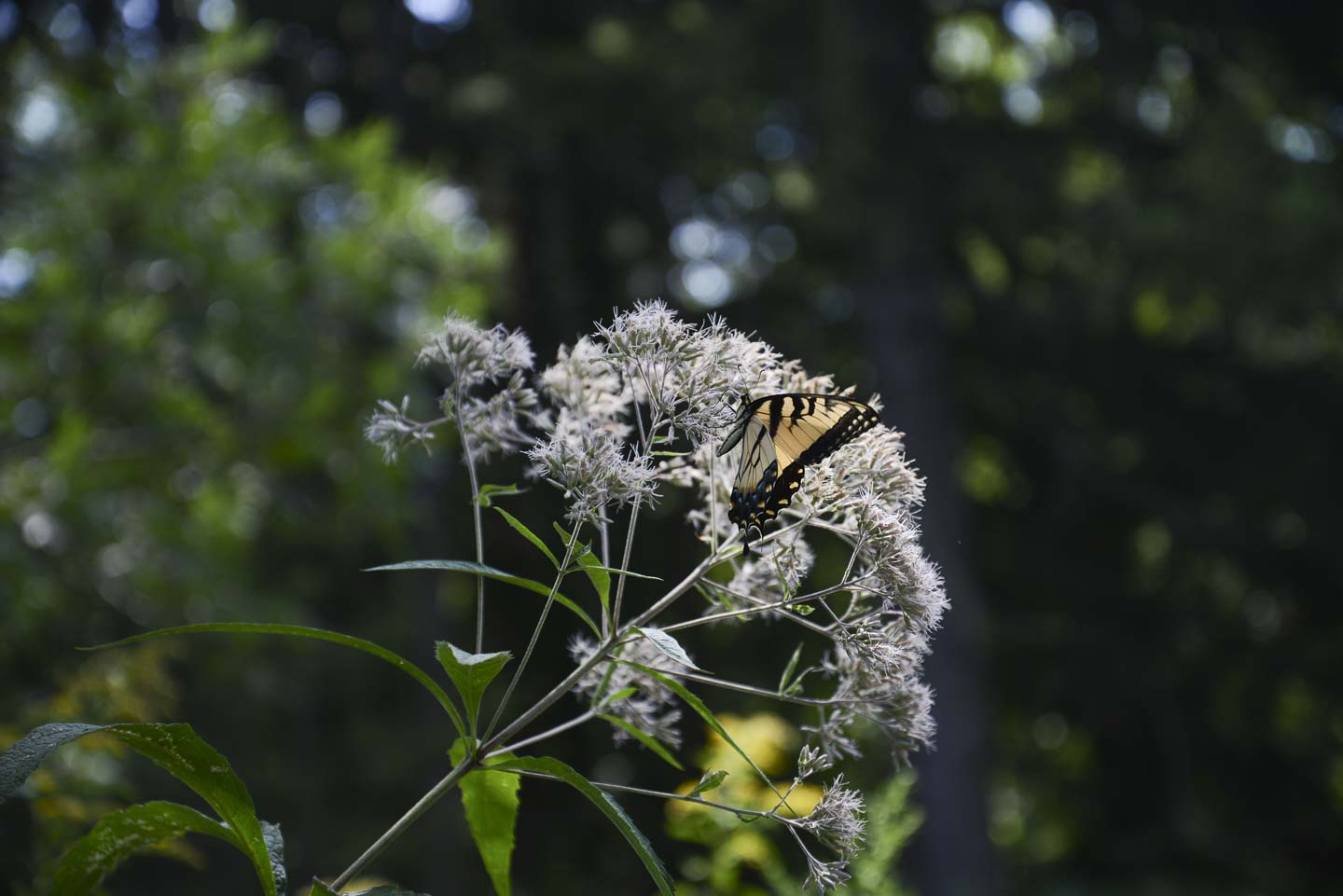As we continue our series of looking at animals often found in Minneapolis parks throughout the seasons, we are excited to again partner with the Kroening Nature Center. This summer, I connected with Mikayla Deiter, Nature Center Outdoor Educator at North Mississippi Regional Park, who was interested in showcasing a new group of animals that she finds noteworthy throughout the parks
#1. Woodchuck or Groundhog

Depending on where you live, you might call this animal a woodchuck or a groundhog, but they are actually the same type of animal. The most noticeable feature on groundhogs is their large upper incisor teeth. It’s this characteristic that allows them to gnaw at your prized garden possessions. They are considered a domestic animal even when in the wild and are known to be pests due to their nature of feeding on household gardens.
In the summer months, a groundhog’s day is spent in their cool burrows. They typically emerge during the very early morning and dusk hours for feeding. In fact, they build a section in their den that acts as their summer house from where they can emerge more easily. Usually in August and early September, groundhogs will eat a lot as they need to bulk up their fat stores in anticipation of winter and hibernation. During this time, they’ll typically eat up to a pound of food per sitting!
FUN FACT: You’ve probably heard the common riddle, “How much wood would a woodchuck chuck if a woodchuck could chuck wood?” Ironically, woodchucks don’t actually eat wood. In fact, they only ever eat the tree’s bark if they happen to arise from hibernation before vegetation has sprung. So, to answer the riddle, not much.
#2. Spiny Softshell Turtle



Images Courtesy of MPRB.
Reptiles and amphibians are considered an indicator of a very healthy habitat, and this is even more apparent in a wetland area. Turtles are a type of reptile that herpetologists categorize by carapace. Carapace is the upper part of the turtle’s shell. Over time, the shell will molt and change as the turtle ages. The leading edge of the carapace on the spiny softshell turtle has enlarged points called tubercles, which gives them their notable spiny appearance.
Spiny softshell turtles prefer living in rivers with large sandy bottoms, hence why the shores of the Mississippi are a great spot to witness hatchlings. Females will lay anywhere from 4-38 eggs in May in sandbars or loose soil, with turtle babies hatching in August or September.
#3. Northern Largemouth Bass
When fully grown, the Northern largemouth bass is an apex predator in its natural habitat, which ranges from the Mississippi River to the eastern United States, southeastern Canada, and northern Mexico. The Northern largemouth typically doesn’t grow more than 10 pounds, but their hunting prowess makes them quite reputable, stalking their prey by hiding amongst the vegetation while waiting for the right moment to attack. During the height of summer, these bass may move to waters as deep as 15 or 20 feet to stay cool, which often makes summer bass fishing a difficult endeavor.
#4. Downy Woodpecker

The Downy woodpecker is often spotted in Minneapolis parks, tree lines, and backyards. Downy woodpeckers are the smallest of all woodpeckers in North America. Because of its small stature, it often will join flocks of chickadees or nuthatches to reduce the risk of predation. While small in build, these woodpeckers have often been a symbol of bravery and hard work. They may hammer on a tree as much as 10 times a minute. Luckily, their brain is protected from shock by a pad of spongy elastic material between their bill and their skull.
A common issue for beginning bird watchers comes from misidentifying the markings between the Downy woodpecker and Hairy woodpecker. It’s helpful to listen for the common “pik” sound the bird emits and its acrobatic activity among feeders or tree branches. Another good indicator is to look at the size of their bills. The Downy’s bill is dainty and about one-third the length of the bird’s head. In comparison, the Hairy’s bill resembles a railroad spike and is almost as long as its head.
#5. Eastern Tiger Swallowtail


Images Courtesy of MPRB.
The Eastern Tiger Swallowtail has bright yellow markings on its forewings, outlined with black crescents, and its hindwings have a beautiful blue iridescent shading. These butterflies are attracted to the fragrant nectar of wild bergamot, common milkweed, thistle, red clover, joe-pye weed, and orange hawkweed. They are native to eastern North America and are commonly seen throughout Minnesota.
Females lay their eggs within crevasses of large hardwood trees, with the first broods hatching in July, and the last emerging in September. The caterpillars are green and smooth with small black spots that mimic eyes to warn off predators. These swallowtails have a lifespan of just around two weeks.

